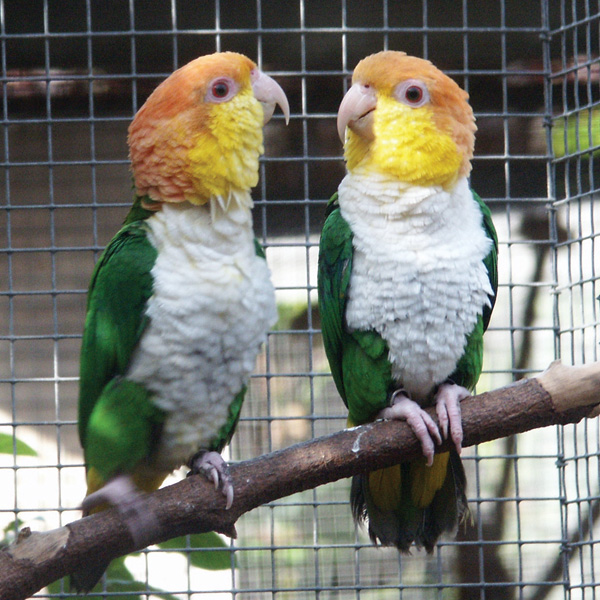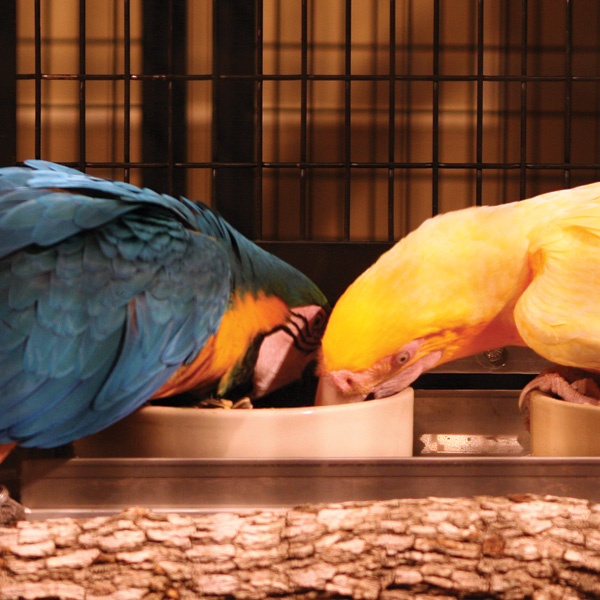- In Parrots Blog
Introducing Parrots – the dos and don’ts
 by Pauline James
by Pauline James
The most dangerous scenario for a new parrot, that is probably anxious and stressed already due to the changes being imposed upon it, is to be put straight into the cage or aviary of a resident bird. However lonely the established single bird may be, if a strange bird is forced upon it, it will be seen as an interloper, and its natural instinct will be to vigorously defend its territory.
If the intention is for the two birds to be housed in the one large cage belonging to the resident bird, then the first thing to do is to remove it, and set up a second cage for the bird. His intended partner should then be put in another similar cage, close by. When the parrots start to show an interest, are watching each other intently, and are calling to one another, move the cages closer together.
When both birds are getting as near to each other as possible, place the cages side-by-side, so they may make physical contact with their beaks for the first time. It is important not to rush this stage, so the new bird has the option to withdraw from conflict safetly, if need be. Sometimes two parrots turn out to be incompatible, and if one bird shows little interest in the other, the birds should not be forced on each other.
The initial bonding process can take anything from one hour to three weeks, depending on the past history of each bird. If either has lost a long-term partner, they may well take longer. But, generally the quicker a pair become bonded, the more successful the partnership in the long-term is likely to be. When you are confident you have a pair that are bonding well, they can be released into the original cage – once a few changes have been made.
Rearrange the cage
It is important to disorientate the original bird as much as possible, so that it no longer associates his old cage with being home. Out of sight of the parrots, strip all the perching, food dishes, toys and any other accoutrements out of the cage and start afresh.
Provide new fresh branches as perching, and arrange them in different positions. Extra branches will be appreciated in the bottom of the cage for recreational purposes, and will help relax them. Provide new versions of favourite items and toys, such as a new large swing, for two, ladders and foot toys, etc., depending on the parrot species. Ideally provide different food pots too, so literally everything in the old cage is now different. This way, two bonded parrots should happily accept each other, and the ‘new’ cage.
5 don’ts
- Mix immature with adults
- Offer a mate of the opposite sex if breeding is not the intention
- Introduce a new bird to a resident bird without quarantining it for at least four weeks first
- Introduce a new mate to a bird when a previous partner is within sight or calling distance
- Mix two species unless they are proven to get on well.
Photo courtesy of Loro Parque Fundación


 by Pauline James
by Pauline James